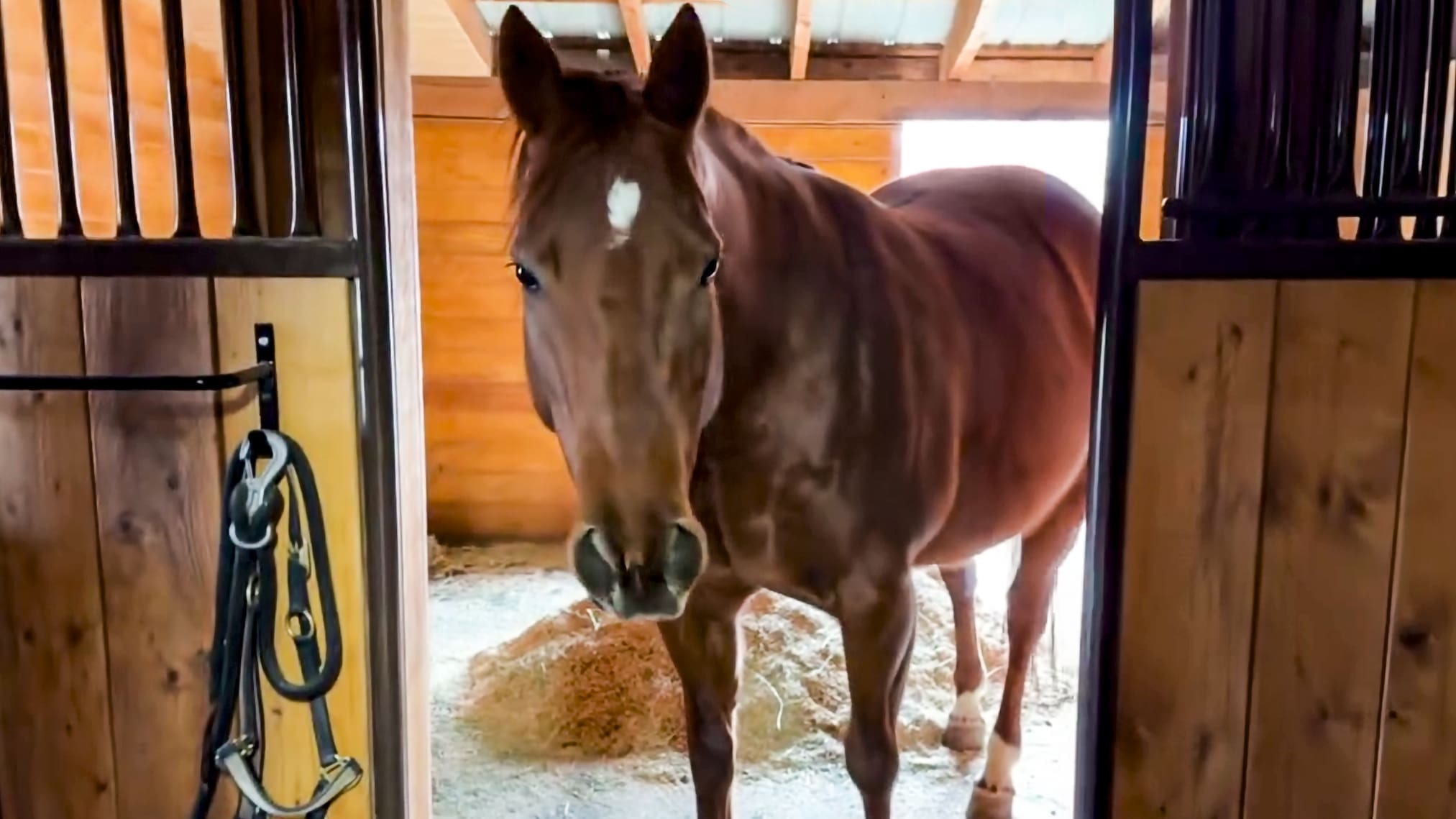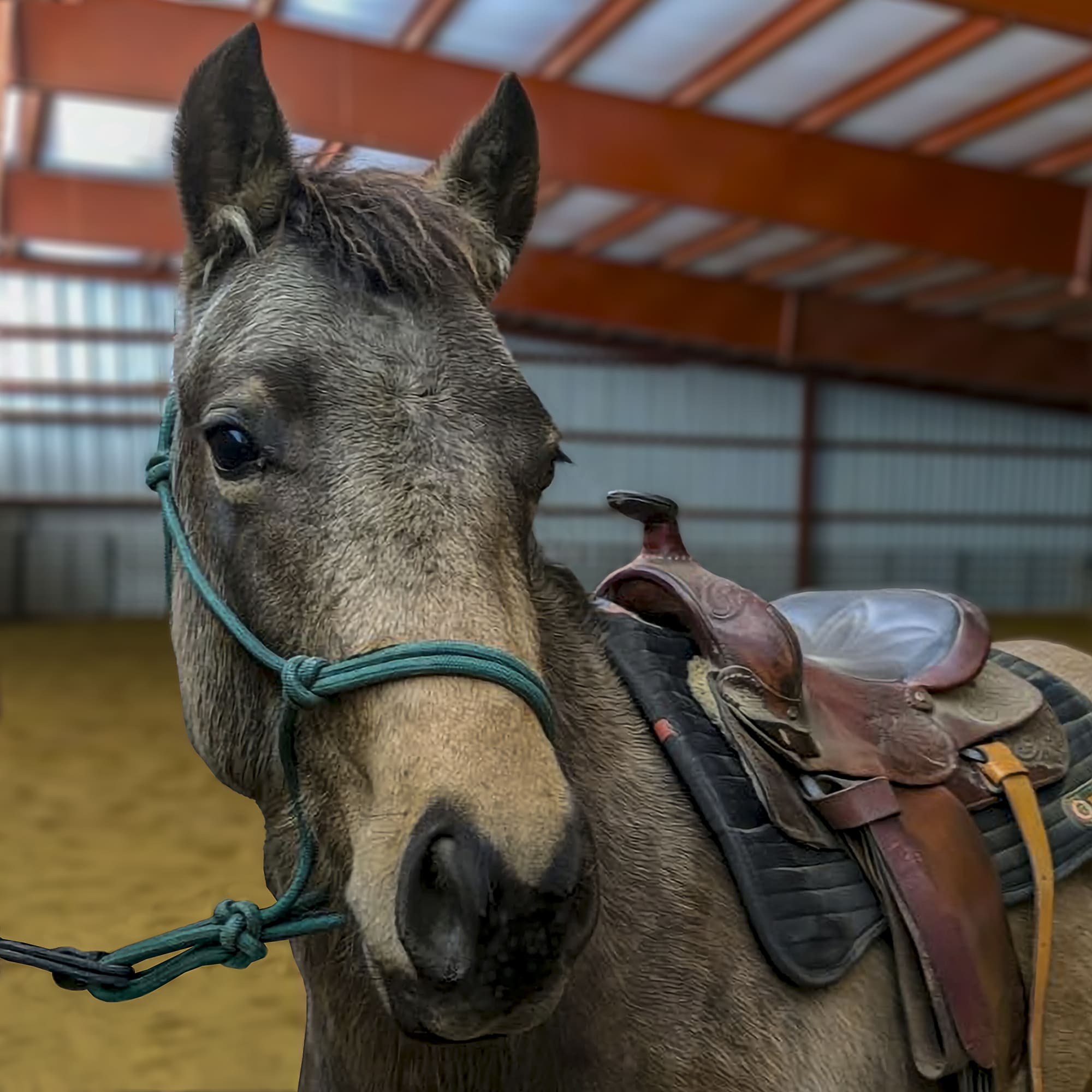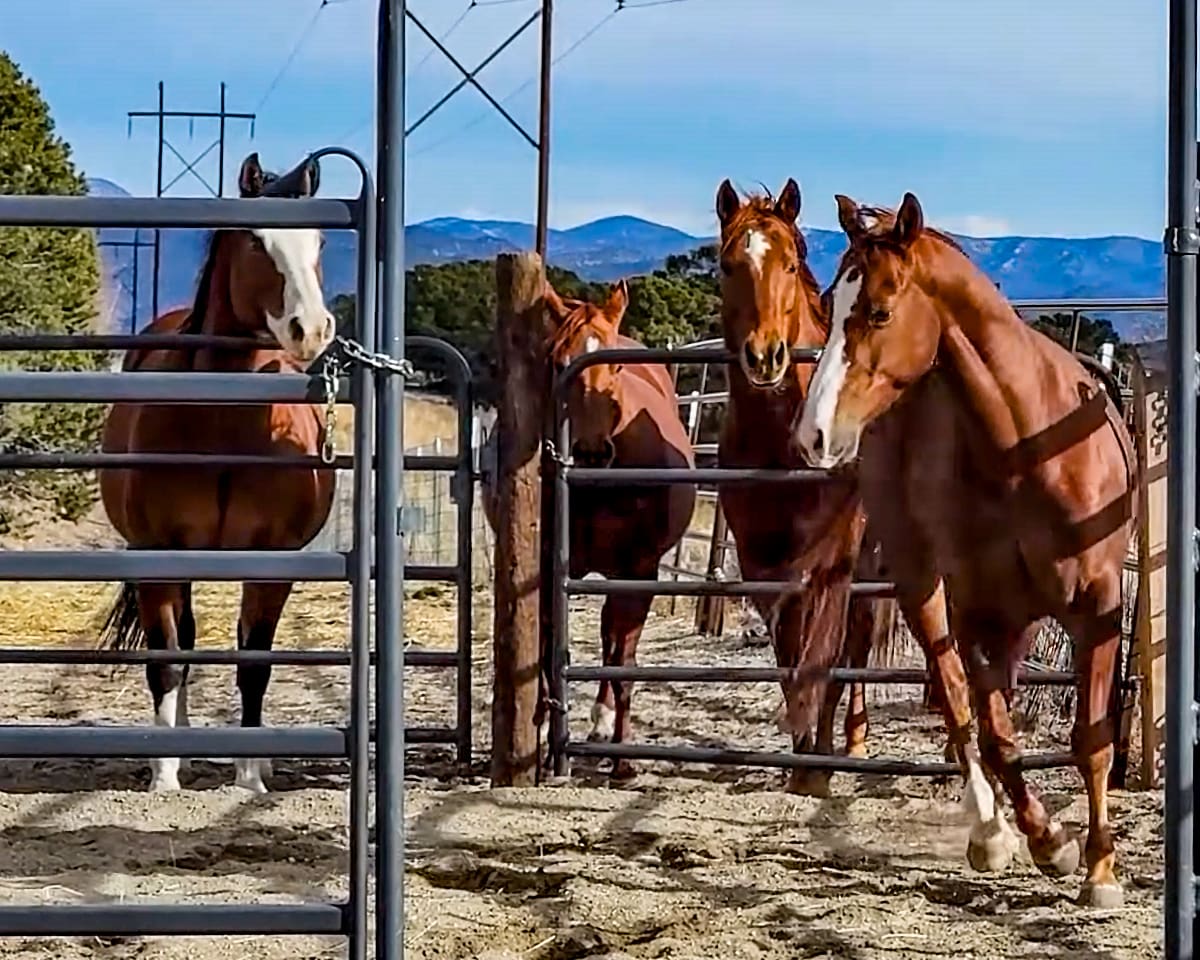by Juliet M. Getty Ph.D. | Feb 24, 2015 |
Many horses rely entirely on hay for their forage needs. Is hay nutritious? Not very. Hay is dead grass; it no longer contains many of the vitamins, omega 3s and omega 6s it once had as living pasture. It does, however, contain protein, carbohydrates, and minerals, and is a significant source of energy. But does it have enough to maintain health? Testing will help remove the guesswork out of diet planning.
Feasible approaches to testing
It is best to have at least 2 month’s supply of hay, but you may not have enough space to store that much. Or you may board your horse where a new supply is brought in every week, often from different growers.
Consider recommending testing to your barn manager or hay provider. Hay brokers who test their hay and sell it along with a guaranteed analysis often find that customers are willing to pay slightly more for each bale. If the providers are not willing to do this, you might consider offering to pay for the test; it will help you as well as other horse owners.
Knowing the nutrient content of your hay is the first step in evaluating any health concerns
While a vitamin/mineral supplement is necessary for filling in the nutritional gaps that exist in hay, there are several components of the hay analysis report that you should pay attention to, depending on the health of your horse. Of particular importance are those horses who are prone to developing laminitis. The feed value of your hay can also influence body weight, immune function, and overall body condition. The table below shows relevant indicators when interpreting your hay analysis report.
| Hay Analysis Values that Impact Horse Health | |
| Digestible Energy | DE provides you with the number of calories your horse is getting from the hay, expressed as Mcals/lb or Mcals/kg. DE should be no more than 0.88 Mcals/lb (1.94 Mcals/kg) on an as-fed basis, if the horse is overweight. |
| Crude Protein | CP tells you how much protein (nitrogen) is in the hay but tells you nothing about the variety and proportion of amino acids (which influence quality). To boost protein quality, feed a variety of grasses, and add more protein sources (e.g., ground flax, chia seeds, split peas, hemp seeds, alfalfa, beet pulp, etc.) |
| NDF | Neutral detergent fiber measures water-insoluble, structural components within the cell wall: cellulose, hemicellulose, and lignin; it does not include water-soluble fibers (pectin and mucilage). As plants mature, NDF increases, providing more bulk and less digestibility. Digestible energy and voluntary intake decreases.NDF greater than 60% is worthwhile for overweight horses since it is lower in calories. Lower NDF hays are softer and more digestible, making them appropriate for maintaining body condition of hard keepers, growing horses, and those with higher energy needs.
|
| ESC + Starch | Ethanol-soluble carbohydrates include simple sugars and short strands of sugars. These, along with starch, are easily digested in the foregut (small intestine) down to glucose, which signals insulin secretion.Insulin elevation promotes body fat storage and increases the risk of laminitis. Insulin resistant horses require low ESC + Starch, which should ideally be less than 10% on an as-fed basis, and less than 11% on a dry-matter basis. This also applies to horses suffering from PPID and PSSM.
Warm season grasses and alfalfa tend to be lower in ESC and higher in starch than cool-season grasses. Grain hays (such as oats, wheat, rye) can develop seed heads which are very high in starch. |
| WSC + Starch = NSC | Water soluble carbohydrates mainly include ESC along with polysaccharides known as fructans which are fermented by the microbial population in the hindgut (cecum and large colon). Too much fructan fermentation reduces hindgut pH, leading to cecal acidosis, endotoxemia, and a cascade of events culminating in laminitis.[i]WSC + Starch equates to the non-structural carbohydrates (NSC) indicator. NSC that is considerably larger than ESC + Starch, indicates high fructans in the hay. Elevated fructans can be problematic for any horse, regardless of health. Cool-season grasses accumulate fructans, whereas warm-season grasses and alfalfa do not.
An NSC percentage less than 12% on an as-fed basis (13% on a dry matter basis), is a favorable target for the insulin resistant horse or one who is prone toward laminitis. |
| Ca:P Ratio | Ideally, there should be twice as much calcium as phosphorus in the diet. Most grasses match this ratio. Alfalfa, however, has considerably more calcium. If you feed large amounts of alfalfa, choose supplements that are designed for alfalfa-based diets (they are low in calcium). |
| Ca:Mg Ratio | Ideally, the calcium to magnesium ratio should be 2:1. Magnesium supplementation assists with muscle spasms, “sensitive” behavior, and insulin resistance. |
| Fe:Zn Ratio | Most hays are high in iron so additional supplementation is not necessary. Too much iron exacerbates insulin resistance. Furthermore, iron competes with zinc for absorption. Therefore it should not be more than five times the level of zinc. Zinc deficiencies can lead to depressed immune function and poor wound healing. |
| Zn:Cu Ratio | Excess zinc can interfere with copper absorption. Ideally, zinc should be between 3 and 5 times more than copper. Copper is required throughout the body, including healthy red blood cells, and melanin production in hair coat color. |
| Nitrates | High nitrates can be toxic, interfering with red blood cell’s ability to transport oxygen. Test if your hay has been exposed to excessive fertilization or contains large amounts of weeds. Values should never be higher than 0.44%. |
How to test your hay
Your goal is to obtain a representative sample, since hay bales can differ, especially if they contain mixtures of forages. Use a hay probe or pull clumps of hay from the inside of 15 to 20 bales. Mix together in a dry bucket. Then pull from the mixture enough to stuff a quart-size freezer bag. Equi-Analytical Labs is an excellent choice for your analysis[ii].
Establish a relationship with your hay producer
If you know the person who actually cuts the grass, discuss environmental factors that can significantly impact the NSC level:[iii]
- NSC content is lowest before sunrise.
- Cool nights (less than 40 degrees F (4 degrees C) will promote NSC storage and grass should not be cut the day following a cold night.
- Grass that is shaded will have a lower NSC level.
- NSC content increases during drought conditions.
- Cuttings later in the season will be lower in NSC.
- More mature grasses will be lower in calories, and more coarse due to a higher indigestible fiber content.
- Grass that has gone to seed will be higher in starch.
Remember, forage 24/7 is the foundation for any horse
You can have the most expensive, most nutritious hay available, but it must be flowing, non-stop, through your horse’s digestive tract. There are many physiological and hormonal reasons for this; read more in the Getty Equine Nutrition Library[iv], as well as in Dr. Getty’s book, Equine Digestion – It’s Decidedly Different.[v]
About Dr. Getty
Juliet M. Getty, Ph.D. is an internationally respected, independent equine nutritionist who believes that optimizing horse health comes from understanding how the horse’s physiology and instincts determine the correct feeding and nutrition practices. She is available for private consultations and speaking engagements. Hear Dr. Getty address issues in horse nutrition at the Kirkland House Foundation in Delta, British Columbia, sponsored by “Hay…Girl!” on May 2, 2015. For more information, contact Pam Janssen at precioushaygirl@gmail.com or call 604-961-7265.
Dr. Getty’s comprehensive resource book, Feed Your Horse Like a Horse, is available at Dr. Getty’s website, www.gettyequinenutrition.com, as well as from Amazon (www.Amazon.com) and other online book retailers. The seven separate volumes in Dr. Getty’s topic-centered “Spotlight on Equine Nutrition” series are also available at her website (where Dr. Getty offers special package pricing) and from Amazon (in print and Kindle versions) and from other online retailers. Dr. Getty’s books make ideal gifts for horse-loving friends.
Dr. Getty’s website, www.gettyequinenutrition.com, offers a generous stock of free, useful information for the horseperson. Sign up for her free monthly newsletter, Forage for Thought; browse her library of reference articles; search her nutrition forum; and purchase recordings of her educational teleseminars. Reach Dr. Getty at gettyequinenutrition@gmail.com.
[i] Longland, A.C., and Byrd, B.M., 2006. Pasture nonstructural carbohydrates and equine laminitis. Journal of Nutrition 136: 2099S-2101S.
[ii] Equi-Analytical Labs www.equi-analytical.com, a division of Dairy-One, is a reputable laboratory that concentrates on analyses applicable to horses. Their Equi-Tech test (#601) is economical ($28) and comprehensive, offering an excellent amount of information.
[iii] Watts, K.A., 2004. Forage and pasture management for laminitic horses. Clinical Techniques in Equine Practice, 3(1), 88-95.
[iv] Click on “Library” at www.gettyequinenutrition.com
[v] One of seven volumes in the Spotlight on Equine Nutrition Series: http://gettyequinenutrition.biz/TeleSeminars/TeleseminarBooks/SpotlightonEquineNutritionTeleseminarSeries.htm




No comment yet, add your voice below!